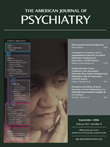Opioid dependence is manifest in a variety of syndromes, ranging from intravenous use of heroin by street addicts to excessive use of oral narcotic analgesics by middle-class pain patients. The approaches to treating these syndromes are diverse as well, ranging from psychosocially based residential therapeutic communities to pharmacological approaches such as methadone maintenance. This volume covers the broad array of these issues in a comprehensive and readable manner.
It also provides a useful perspective on the history of narcotic addiction, the complexity of regulatory issues, and the epidemiology of use and abuse, all quite important in order to present a meaningful context for treatment. These issues are important. Anyone who wishes to understand why successful treatment of narcotic-addicted people is difficult to achieve will benefit from reading about how the Harrison Narcotics Act of 1914 reflected a social bias against opioid addicts, one that we still live with, and how Vincent Doe and Marie Nyswander struggled to develop methadone maintenance, achieving the first of the research-based pharmacological treatments now available.
The volume draws on the important work of the editors as well as that of other leading figures in the field. David Feillin, for example, writes about office-based buprenorphine treatment, George De Leon and his colleagues about medication-free treatment, Michael Gossop about medically-supervised withdrawal, and Edward Nunes and colleagues about the pharmacology and clinical practice use of naltrexone. Methadone maintenance treatment is represented in a series of chapters ranging from the medication’s pharmacology to the organization of counseling programs.
One example of the utility of the book is the clarity it provides on the many diverse entities that constitute the universe of the field. Many are represented by acronyms. Survey approaches used to determine rates of prevalence of drug abuse are described, such DAWN (the Drug Abuse Warning Network), and the MTF (Monitoring the Future) epidemiologic surveys. Assessment instruments such as the ASI (the Addiction Severity Index) and AUDIT (the Alcoholic Use Disorders Identification Test) are discussed. Approaches to evaluation such as DATOS (the Drug Abuse Treatment Outcome Study) and the TSR (Treatment Services Review) are presented as well.
The volume serves as a treatment manual, in that pharmacological and psychosocial approaches as well as clinic organization are presented. This can be quite useful to the clinician working with addicted patients. Certain chapters also deal with clinical aspects of specific populations, such as women, patients under legal restriction, and adolescents.
If there is a problem with this volume, it resides in the difficulty in keeping up with the changing patterns of abuse and new approaches to treatment that emerge. The recent epidemic of controlled-release oxycodone (Oxycontin) abuse is discussed, but information on its clinical and cultural manifestations would be useful. Fentanyl abuse and dependence, particularly by anesthesiologists and other physicians (and now by street addicts), is an issue that is of public health importance, and readers might want to learn about it and the complexity of its role in physician impairment.
Perhaps most problematic are issues important to the clinician that neither the authors nor contemporary researchers can effectively address because of limitations in reliable empirical findings: What can be said about the long-term outcome of a variety of treatments now in use? We know relatively little about the morbidity and mortality experienced by patients who have terminated their methadone maintenance treatment, seemingly successfully. (Anecdotally, it is not good.) The same can be said about heroin addicts now being maintained in office practice receiving buprenorphine. How many will successfully come off this medication, and how many will relapse later? What role will buprenorphine play in the treatment of the variety of patients with pain syndromes? This latter use is turning out to be more common than anticipated. How long will patients continue to return for their monthly injections of depot naltrexone? Will they relapse to heroin use in the absence of intensive counseling? How effective are 12-step approaches, used widely by the residential rehabilitation community, and, similarly, what role do Narcotics Anonymous groups play in some patients" recovery? These are questions that the authors cannot answer on the basis of controlled studies but are compelling issues for clinicians, important to clinical investigators, and often overlooked by the federal government in research planning. All this leaves us with an excellent book in a field where some very important questions remain to be answered.

